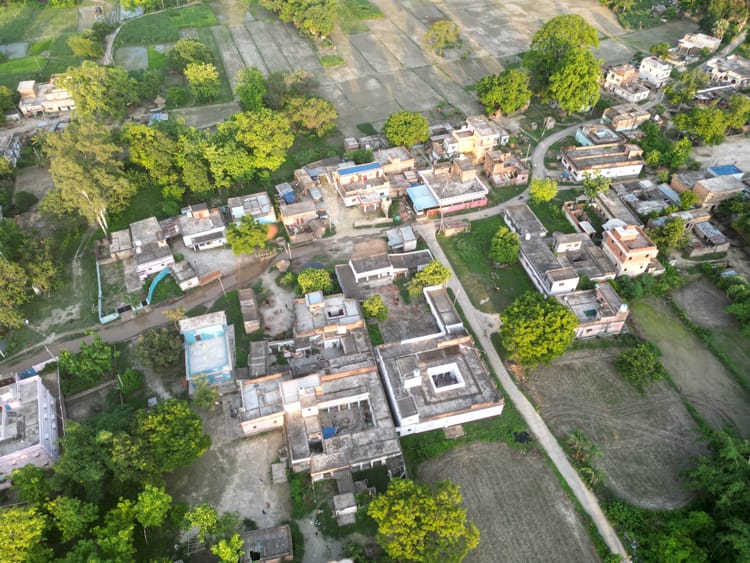A Unified Approach to Student-led Robotics at the University of Michigan

According to the latest QS World Ranking, the University of Michigan is the top public university in the United States. It’s no secret that we are bolstered by a strong alumni base and excellence all across the board, especially in the field of engineering. In the fiscal year of 2016, the College of Engineering spent over 150 million dollars on research expenditures. Before that, in 2015, the University established a Robotics Institute to house faculty from multiple fields and enable greater collaboration between the University and industry partners. From artificial intelligence to fully automated factories and farms, current trends and predictions show that robotics will play a large part in our future. Given the academic excellence of the University and our proximity to Detroit, the birthplace of the American auto industry, it makes perfect sense for the University to pursue not just autonomous vehicles but robotics in many forms. As we reach this critical point in the establishment of such infrastructure to support future growth in learning and research, I believe that students (particularly undergraduates) should not be left out.
I am calling for the creation of a student-led, student-run, bottom-up approach to complement everything being done by the University’s top-down approach thus far.
I envision the student-led approach as a place on campus that houses and incubates student-led robotics projects, where students receive hands-on education and truly compound their classroom experience. This facility would allow both existing teams and startup ventures working towards common goals to collaborate and support each other. In addition, such a facility would enable the creation of a forum for hosting joint events and engaging industry and academic partners. A Student Robotics Center would not just yield a building but rather a community of scholars and pragmatists that examine the world and look at how they can play a part in improving it with technology. And most importantly this facility would open its doors to anyone who enters this University with an interest in robotics. Such a place will host award-winning teams, transform students into leaders, and incubate both students and technologies that drive the future of tomorrow.
The Status Quo
In the field of robotics, there exist numerous resources in a top-down fashion at the University. In terms of autonomous and connected vehicles, MCity is a public-private partnership containing a 22-acre test facility. TechLab at MCity is an incubator on site and it hosts startups in conjunction with a small number of students to coexist in a mutually beneficial shared space. In tandem with the University (represented by the College of Engineering, Transportation Research Institute, and Center for Entrepreneurship), the Michigan Department of Transportation and industry partners have created a unique ecosystem that can make Michigan the center of autonomous vehicle development in the United States.
Additionally, faculty and students across various academic departments engage in groundbreaking research. While OEMs, start-ups, and faculty can interact with students, they are mostly graduate students; they remain separate from much of the rest of the University.
In 2015, the University launched a Robotics Institute, and then later announced plans to build a 75 million state-of-the-art facility to house this multidisciplinary unit. A four-story building with classrooms, research labs, and a floor dedicated to Ford Motor Company, the Robotics Institute building will also have a dedicated space for student teams. The student team space is, by design, adjacent to a workshop space. The intention is that training procedures for the shop space will be developed in tandem with training procedures for the Wilson Center, and hence students can be certified in each facility at more or less the same time.

The other half of this equation is the apparatus for students. The Wilson Student Team Project Center is overcrowded, and doesn’t have the facility to support new teams or the rising demand. Countless student projects and ideas have arisen in this field, but currently, there are four main design teams on campus. UM::Autonomy, the oldest group, was just founded ten years ago; illustrating how this is still a relatively new challenge for the University in its 200-year history. Drone enthusiasts formed the Michigan Autonomous Aerial Vehicle team in 2007. In 2014 another team, StarX, joined the scene with a commitment to building a robotic exoskeleton for human use (an Iron Man suit sans Jarvis and weapons). Most recently, the Intelligent Ground Vehicle was founded in 2016 (by myself and some friends) to build a fully-functioning self-driving car. Outside of project teams, non-technical groups such as the First Alumni Mentors Network at Michigan and Michigan Engineering Zone are also closely affiliated with shared goals of promoting robotics and leading outreach activities for secondary school children.
Although all these teams currently operate entirely independently of each other, they all share similar issues such as communication with the greater student body, communication with the College of Engineering faculty and administration, fundraising and community outreach, lack of a common workspace, and a lack of collaboration opportunities.
Purpose of the Organization
A Student Robotics Center (SRC) does not just have to address the needs of a few existing teams; in fact, it can go on to play a much bigger role in facilitating student-driven robotics at the University. The primary mission of such a place should be to foster, highlight and support student-led robotics at the University of Michigan. Beyond that, the SRC should enable communication and collaboration between University of Michigan robotics teams in order to further enlighten students and faculty about robotics and ultimately create a positive impact. The three primary goals could also be summed up as education, exposure and support.
To bolster its educational mandate, the SRC would host various drop-in workshops on various topics such as soldering, computer-aided design (CAD), linear algebra, robotics theory, and even fundraising and startup strategies. Mostly led by experienced student instructors, both at the graduate and undergraduate level, these workshops could even feature guest lectures based on demands of the community. In addition, an introductory course (something similar to an Engineering 100 section) could be developed for students from all parts of the student body. Such a course would not only be an introduction to robotics but a primer to joining or starting a new project, easily allowing for new student recruitment. In order to highlight the project teams, the SRC could also supply uniform and unified branding to highlight all teams at events and outreach activities. Similar to how airline alliances highlight one another with unified branding, each project team could be considered a member and lead to greater exposure in various forms of communications. In addition to dealing with existing teams, the seed projects at the SRC could benefit from seed funding in order to turn them into self-sustaining groups. This process would also involve aid in filing the appropriate paperwork with the University to become an organization or connecting projects to resources such as the Center for Entrepreneurship, Tech Transfer, or the Business Engagement Center for funding and venture capital.
By aiding teams and indirectly reducing hurdles and challenges, the SRC can let students focus on robotics. Leveraging existing resources and combining them can allow the University to become not only a hub for groundbreaking research and technological marvel but also a model for student-led robotics.
The Model at Peer Institutions
How will such an organization be implemented? What are all the parts and pieces required to make this work? Several peer institutions have already developed models of engaging students in robotics, especially at the undergraduate level. Each institution is different in its own right, however, I’ll be exploring some models that already exist and work well.
Carnegie Mellon University in Pittsburg, PA has long been a name in engineering and robotics. The campus has a Robotics Club, a student-run makerspace that bills itself as not just a workshop but a social space3. In this space, projects and teams aren't permanent members but rather a community of members who share resources and tools to bring their ideas to life. The Robotics Club is not just limited to project teams; students also use it for classroom activities as well. According to its website, the organization has been around since 1984, making it one of the oldest collegiate robotics groups.
Tucked in the middle of downtown Atlanta, the Georgia Institute of Technology is an engineering powerhouse in the Southeastern United States. The RoboJackets student organization at Georgia Tech is a competitive group comprised of various sub-teams that compete in many competitions across the country. Its primary mission is to educate, promote, and advance the field of robotics by allowing students the opportunity to compete. All of the RoboJacket teams carry a singular banner, unlike the uniquely independent competitive teams at Michigan.
Although not a peer institution, an organization at the University of Michigan, operates in a similar manner to the other two groups listed above. BLUELab, or Better Lives Using Engineering Laboratory, is an umbrella organization that houses within it various sub-teams that use some form of technology to improve living quality in society. The BLUELab model allows for the group to raise funds and disburse funds to its various constituent groups, allowing them to focus on their endeavors. In addition, BLUELab also has a governing body comprised of sub-team leaders and executive officers.
A model that works for Michigan Robotics
While the three models explored above may work in their own regard, we can not simply take a model and just copy and paste it; primarily due to the nature of how the University classifies student organizations and the status quo, and all stakeholders involved. At the University, two flavors of registered student organizations exist: voluntary student organizations (VSO) and sponsored student organizations (SSO).
Leveraging the existing infrastructure, a Student Robotics Center could house VSO and SSO teams as long-standing permanent members once they complete a short application process. Each of these constituent teams would send a representative to a governing body or advisory board. Every year constituent teams will be required to renew their constituent team status by updating their project proposal.
On the other hand, a support system for jump-staring new ventures needs to be in place. This dual structure allows this space to be utilized to its fullest extent. Any team or project not recognized by the University as an SSO or VSO should be considered a seed team. After projects are pitched to an independent review board comprised of faculty, industry partners, and peers, seed projects would become eligible for workspace, incubation, and some preliminary funding from the Student Robotics Center. Every semester, seed teams would be required to renew their seed status by going through the approval process. After one year as a seed team, the team will have the option to apply to become a constituent team if their venture will be around as a long-term student organization. Otherwise, from this point forward, they could be linked with the appropriate resources at the Center for Entrepreneurship, Office of Tech Transfer, or others. Should new ventures choose to go the design team route, they will be supported until they become self-sufficient.
Ultimately, this dual classification allows us to leverage existing teams, rules, and policies while also allowing new ideas to come to life rather than dying in their infancy due to logistical challenges.
With every project team sending one representative, we can ensure that this entire process is democratic and critical in developing leadership experience for students. The student advisory or governance council would be able to vote on project proposals, funding for seed teams, and other decisions. Utilizing the consensus-based decision-making model, students could build a truly inclusive space for robotics projects of all kinds.
Moving Forward
While the world is waiting for the Robotics Institute building and its dedicated student workspace, several interested groups have already started to push the idea of student-led robotics forward. As the founder of the Intelligent Ground Vehicle team, I have pushed for a larger unity amongst existing student teams and worked to build connections with various University and industry partners. The leaders of UM::Autonomy, Michigan Autonomous Aerial Vehicle, StarX, and FIRST Alumni Mentors Network at Michigan have joined me in forming a working group titled Michigan Applied Robotics Group to address some of these issues. We see MARG as a way to move forward with consensus amongst the teams and ensure that a student-led group will pave the way forward for student-led robotics on a much larger scale. Each team has sent representatives and over the course of the Winter 2017 semester, MARG has rolled out a strategic plan for its first year in order to make this idea a reality. Our plan incorporates three primary objectives: hosting tech talks, facilitating workshops, and implementing a unified branding.
Tech talks are a great way to share our vision of student-led robotics with the larger campus community and potential partners. MARG is working to organize a series of tech talks in which professors, industry experts, and related guests can speak about topics ranging from the complexity of bipedal robotics to the implementation of a viable business strategy in deploying autonomous fleets. There are multiple venues around us that could host tech talks yet still provide a very engaging atmosphere. Whether these talks will be on a monthly basis or all lumped into a symposium remains to be seen. One thing is clear, however; tech talks work for existing student organizations and they are a great way to leverage interest from all parties involved.
MARG has partnered with faculty and acquired a lab space for hosting hands-on workshops. Initially, graduate students will lead educational workshops for the teams and their members to foster collaboration and knowledge transfer among teams. This is also an opportunity for undergraduate students to learn about concepts in robotics that are applicable to their teams but are not necessarily taught at the undergraduate level. Workshops will be geared towards undergraduate students developing a working understanding of such topics so that they can apply these to their student teams. Topics will be in each workshop.
A unified branding approach adds to the credibility of both the alliance organization MARG and the individual teams by unifying them under a single name while keeping them separate entities. When teams incorporate the MARG name and logo on their competition shirts, posters and other material in addition to their individual names and logos, it will convey a sense of preexisting community. In addition, MARG will maintain a website that will list students from all the member teams, as well as quick access to individual team websites. A singular website will aid industry and academic sponsors to find the robotics teams and to specifically find the team best suited to their partnership interests. The current timeline for a unified branding concept is well underway, we are looking to have these items finalized by May so that individual teams may incorporate the unified branding before their individual competitions and recruiting activities in the fall semester.
Perhaps in a few years, MARG may morph into a Student Robotics Center, but we can not simply wait that long. There is unbridled energy in robotics from all sides: the University, industry, and students; the time is now. We wish to take this energy and focus it on building a stepping stone to something much larger. The University of Michigan is uniquely positioned; with its proximity to the automotive capital of the world, exposure to defense funding for the development of autonomous drones for naval-based applications, an on-site facility for autonomous vehicle testing, and the backing of the largest public endowment of any university in the world, there is no reason the University of Michigan should not be the national center for robotics development, especially with a diverse, dedicated and entrepreneurial student body.




